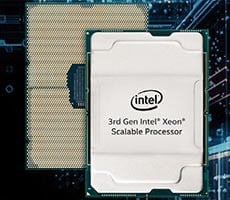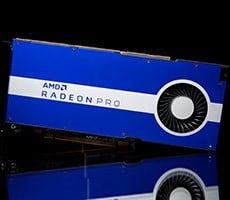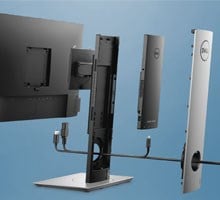When we test hardware we typically use a blend of "real world" and synthetic tests, but that can be difficult to pull off with something as unpredictable as wireless networking. There aren't any established benchmarks like
3DMark, per say, and it is impossible to remove variables in the testing environment anywhere outside a laboratory, so as always your mileage may vary. Here in the real world where we test, performance varies according to a variety of factors, including where the router is placed, the size and construction of your dwelling, interference from neighbors, and many more. However, we did our best to illustrate both real world and "best case scenarios" with our testing, and for that we relied on the program
NetPerf. This tool allowed us to setup one PC as a server, and one as a client, and test the connection speed between the two computers. The wireless adapter we used for these tests was a
Broadcom BCM4360 which is the onboard part in the Macbook Pro we used for testing (running Windows 10 via Boot Camp). We tested at both 20 feet away with line-of-sight, and 30 feet away with two walls separating the computers. We tested both TCP and UDP packets; TCP represents the "real world" expectation and UDP represents the best case scenario. To make things actually "real world" we also connected a USB 3.0 hard drive to the routers and tested a file-copy at 20 feet from the router on both 2.4GHz and 5GHz channels. Both of the PCs we used for testing were running Windows 10, and we ran each bandwidth test three times and recorded the average of the three runs. We think these tests provide a fair representation of what one can expect in an urban environment using these routers at medium range. We compared these routers to all the AC routers we've tested previously, including the
tri-band routers along with the
Linksys EA9200 and the
Synology RT1900AC.
We'll begin with testing at 5GHz, then move to 2.4GHz testing below.
 |
|
Wireless Performance 5GHz and 2.4GHz |
| WiFi Router Testing Over Various Distances |
|

At 20 feet with a clear line-of-site the both the Netgear R7800 and the Linksys EA7500 were close to one another in terms of TCP throughput, with the Netgear posting a slightly faster overall speed. Compared to all the previous AC routers we've reviewed the Nighthawk X4S is one of the fastest, with its TCP speed of 685.2Mb/s making it the second fastest router we've tested behind the Synology Router. Surprisingly it absolutely smoked its big brother, the AC3200 tri-band R8500.
When looking at UDP figures, the Linksys EA7500 is so far out in front of the other routers it's not even close. The Netgear R7800 finished as the second-fastest router we've tested using this metric, which is not too shabby.

At 30 feet with a few walls separating the router and the client, the Netgear outpaced the Linksys EA7500 by quite a healthy margin, delivering TCP throughput that far exceeded that of all the other routers so far. Its speed of 639.3Mb/s is the fastest score we've seen, and was over 100Mb/s faster than what the Linksys router was capable of achieving. The TCP output of the Linksys router is just above the average speed for routers of this class, but not exceptional.
In the UDP test the Linksys router once again came out on top of all the previous routers, and the Netgear finished third overall with a very respectable rate of 671.5Mb/s.

Both the Netgear and Linksys routers were the two-fastest routers we've seen thus far performing a 5GHz file transfer, so we have no complaints about either of them. The Linksys router was a smidge faster, however.

At 30" neither router impressed us much at 2.4GHz, in either the TCP or UDP test, with both of them delivering slower-than-expected performance. In our UDP test both routers performed at a rate that was within 1Mb/s of each other, so it's a tie as both routers performed about mid-pack. The TCP results were equally disappointing, with both routers performing worse than any of the previous AC routers we've tested.

We're happy to report that things improved a bit at 20 feet, but unfortunately both routers performed about the same in comparison to their competition, which is to say they didn't do particularly well. Just like at 30 feet, these two routers are two of the slowest routers we've seen at 2.4GHz, slotting in at the bottom of the benchmark chart next to the Asus RT-AC3200 and Nighthawk X6, which are both excellent routers but suffer from the same ailment at 2.4GHz.

In our 2GB file transfer test on the 2.4GHz band, both routers performed well enough to rank third and fourth fastest, which is great as it indicates the slowness we saw in wireless speeds didn't translate directly to file transfers.
 |
| Power Consumption |
| Tested At The Outlet |
|

We also measured each router's power output at the outlet using this meter. Surprisingly both of the routers fell a bit lower than average when sitting idle, with the Linksys EA7500 sipping just 10.2 watts and the Netgear behaving like a hummingbird by consuming only 8 watts. Under load the Linksys EA7500 was the most energy efficient router we've seen thus far, imbibing only 13.2 watts, whereas the Netgear's power consumption doubled to 16 watts, bringing it inline with the other routers we've tested.













